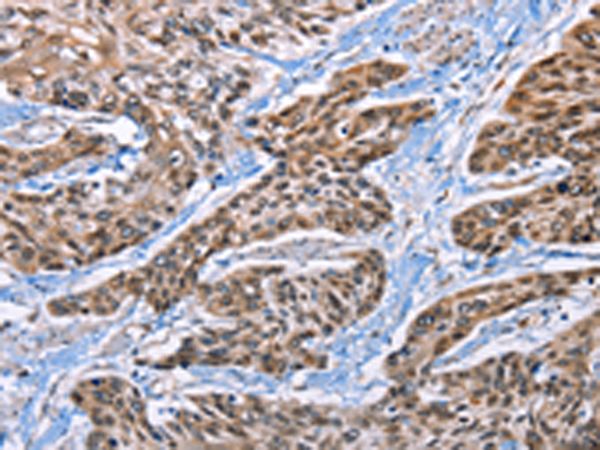
| WB | 咨询技术 | Human,Mouse,Rat |
| IF | 咨询技术 | Human,Mouse,Rat |
| IHC | 1/25-1/100 | Human,Mouse,Rat |
| ICC | 技术咨询 | Human,Mouse,Rat |
| FCM | 咨询技术 | Human,Mouse,Rat |
| Elisa | 1/1000-1/5000 | Human,Mouse,Rat |
| Aliases | SEK, HEK8, TYRO1 |
| Host/Isotype | Rabbit IgG |
| Antibody Type | Primary antibody |
| Storage | Store at 4°C short term. Aliquot and store at -20°C long term. Avoid freeze/thaw cycles. |
| Species Reactivity | Human, Mouse |
| Immunogen | Synthetic peptide of human EPHA4 |
| Formulation | Purified antibody in PBS with 0.05% sodium azide and 50% glycerol. |
+ +
以下是3篇与EPHA4抗体相关的文献摘要概括:
1. **文献名称**:*EphA4 Signaling in Axons Controls Chemorepulsion and Cortical Pathfinding*
**作者**:Kullander K, et al. (2001)
**摘要**:该研究通过使用抗EphA4抗体阻断其活性,揭示了EphA4在脊髓轴突导向中的关键作用,证明其介导的排斥信号对神经发育中轴突路径选择至关重要。
2. **文献名称**:*A Chemical Genetic Approach for the Functional Assessment of EphA4 in Amyotrophic Lateral Sclerosis*
**作者**:Dokter M, et al. (2014)
**摘要**:作者开发了一种基于EphA4抗体的化学遗传学工具,证明抑制EphA4活性可延长ALS小鼠模型的生存期并改善运动神经元退化,提示其作为治疗靶点的潜力。
3. **文献名称**:*EphA4 Blockade Promotes Regeneration after Spinal Cord Injury by Alleviating Inhibitory Signaling*
**作者**:Fabes J, et al. (2013)
**摘要**:通过抗EphA4抗体干预,研究发现阻断EphA4可减少胶质瘢痕形成并促进轴突再生,为脊髓损伤修复提供了新的治疗策略。
这些研究均聚焦于EphA4抗体的功能阻断或调控作用,涵盖神经发育、退行性疾病及损伤修复等领域。
×